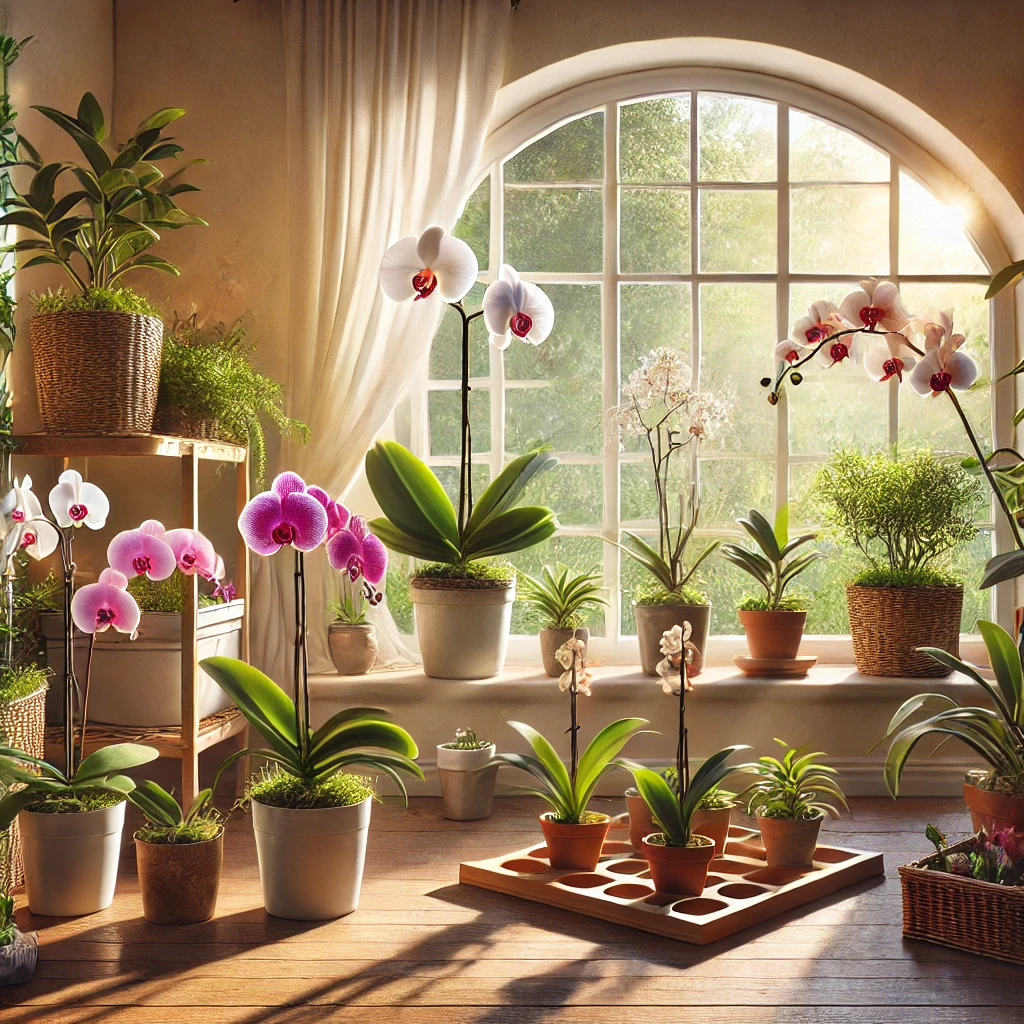Growing orchids can be a rewarding experience, but many beginners and even experienced growers make common mistakes that can affect their plant’s health and ability to bloom. Orchids have specific needs that differ from most houseplants, and failing to meet these requirements can lead to poor growth, disease, or even plant death. Understanding these common mistakes and how to avoid them will help you cultivate strong, thriving orchids that bloom regularly and stay healthy for years.
One of the biggest mistakes beginners make is overwatering. Unlike typical potted plants, most orchids are epiphytes, meaning they grow attached to trees in nature, absorbing moisture from the air and rainwater that flows over their roots. Their roots are adapted to dry out between waterings, and keeping them constantly wet can lead to root rot, one of the most common causes of orchid death. A clear sign of overwatering is mushy, blackened roots and yellowing leaves. The best way to avoid this mistake is to only water when the roots appear silvery-white and to ensure that excess water drains completely from the pot. Using a well-draining orchid mix with bark and perlite helps prevent moisture from being trapped.
On the other hand, underwatering is another issue, though less common. Some growers assume that orchids require minimal water and end up dehydrating their plants. Signs of underwatering include wrinkled leaves and dry, shriveled roots. To correct this, orchids should be watered thoroughly, ensuring the roots turn green before allowing them to dry out again. If your orchid is in a very dry environment, placing it near a humidity tray or misting it lightly in the morning can help maintain proper moisture levels without soaking the roots.
Another frequent mistake is improper lighting. Orchids require the right amount of light to bloom, and inadequate light can lead to lush green leaves but no flowers. One way to check if your orchid is receiving enough light is to observe the leaf color—if the leaves are dark green, the plant may not be getting enough light. If they are reddish or yellowish, it might be exposed to excessive direct sunlight. The best location for most orchids is near an east-facing or bright indirect light source. If natural light is limited, LED grow lights can supplement the orchid’s needs without causing overheating.
Temperature fluctuations are another issue that can affect orchid health. Orchids thrive in stable temperatures between 65°F and 85°F (18°C to 29°C) during the day and slightly cooler at night. However, sudden temperature drops, drafts, or exposure to heat sources like radiators or air vents can stress the plant, leading to bud drop or stunted growth. Keeping orchids in a consistent temperature environment, away from direct heat sources and cold drafts, ensures steady growth and flowering.
One mistake that many growers overlook is using the wrong potting medium. Unlike regular houseplants, orchids do not grow in soil. Using standard potting soil suffocates the roots, leading to moisture retention and rot. Orchids need a well-aerated mix, such as bark chips, sphagnum moss, coconut husk, or perlite, to provide the necessary drainage while maintaining some moisture. Different orchids require different mixes—Phalaenopsis orchids prefer bark-based media, while Oncidiums and Paphiopedilums do better with a finer mix that retains more moisture.
Repotting mistakes can also cause problems for orchids. Many growers either never repot their orchids or do so incorrectly. Orchids need repotting every 1-2 years because the potting medium breaks down over time, leading to poor aeration and water retention. If an orchid has overgrown its pot, has mushy roots, or is no longer draining properly, it’s time to repot. When repotting, always remove old media, trim damaged roots, and use fresh, well-draining material. Avoid repotting while the plant is in bloom, as this can cause stress and premature flower drop.
Another common mistake is fertilizing too much or too little. Some growers believe orchids don’t need fertilizer, while others overfeed their plants. The right balance is essential—orchids should be fertilized weekly with a diluted balanced fertilizer (20-20-20) during the growing season. When the plant is preparing to bloom, switching to a bloom booster fertilizer (10-30-20) encourages flower spike development. However, using fertilizer at full strength can burn the roots, so it’s important to always dilute it to half or quarter strength. Additionally, flushing the pot with clean water once a month helps prevent salt buildup in the growing medium.
Humidity is often an overlooked factor in orchid care. Since many orchids originate from humid rainforests, they require humidity levels between 50% and 70% to thrive. Placing an orchid in an overly dry environment, such as near air-conditioning vents or heaters, can cause bud blast (flower buds drying and falling off) and leaf dehydration. To increase humidity, use a humidifier, humidity tray, or group orchids together to create a microclimate.
Neglecting proper air circulation can also lead to issues. While orchids enjoy humid environments, stagnant air can cause fungal infections and mold growth. Ensuring that there is gentle air movement around the plant, such as placing a small fan nearby, can help keep orchids healthy by preventing moisture buildup on leaves and roots.
One final mistake that many orchid growers make is ignoring pest infestations. Orchids are susceptible to pests such as spider mites, scale, mealybugs, and aphids. These pests can weaken the plant by sucking sap from the leaves, causing yellowing and wilting. If pests are detected, prompt action should be taken—removing them manually with a cotton swab dipped in alcohol, using neem oil, or applying insecticidal soap can prevent infestations from spreading. Regularly inspecting leaves, roots, and potting media can help detect problems early.
By avoiding these common mistakes, orchid growers can significantly improve the health and longevity of their plants. Understanding the importance of proper watering, lighting, temperature, potting medium, fertilization, humidity, and pest control creates the foundation for a thriving orchid collection. With patience and attention to detail, orchids will reward growers with vibrant, long-lasting blooms and healthy growth for years to come.
